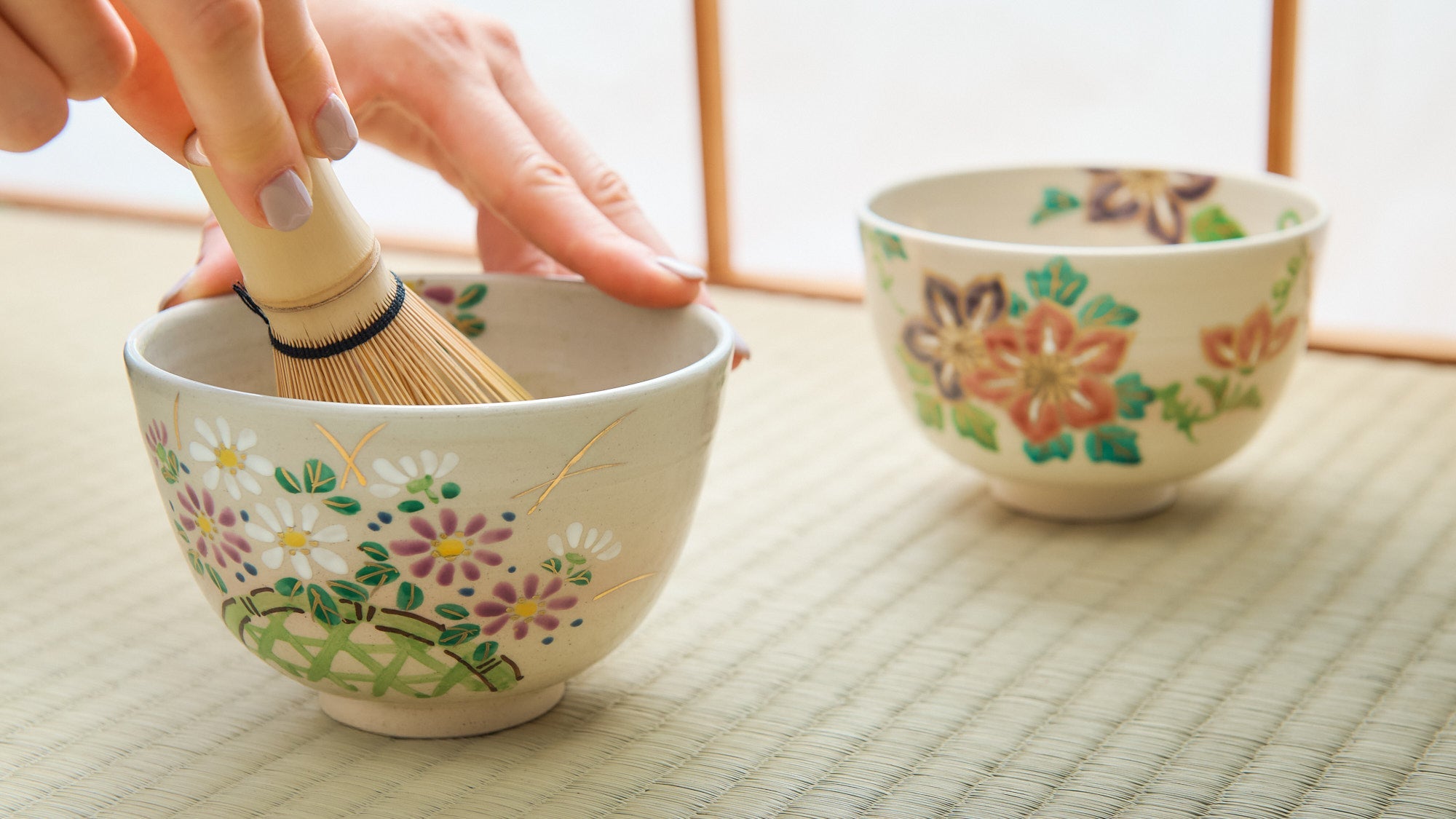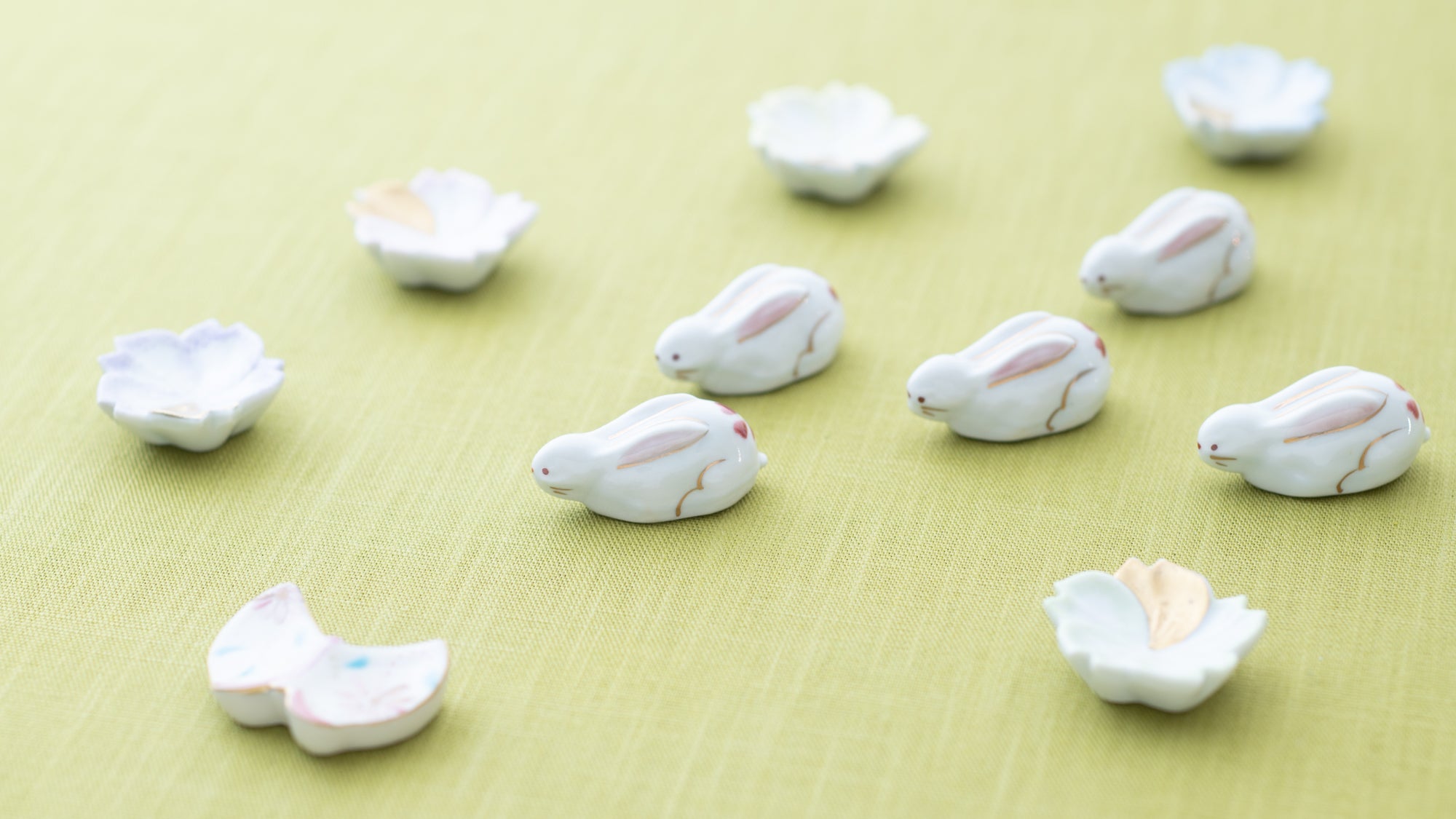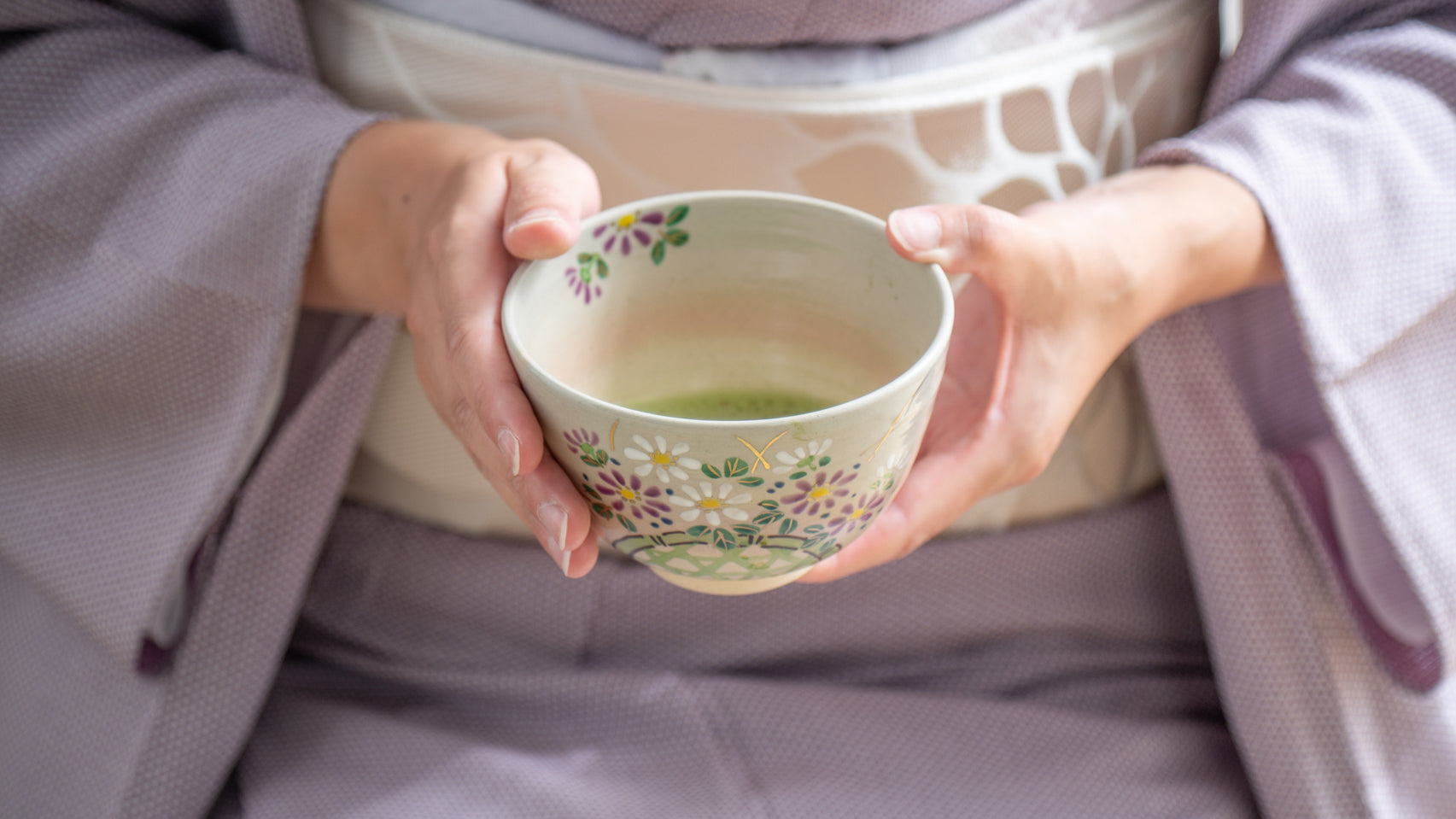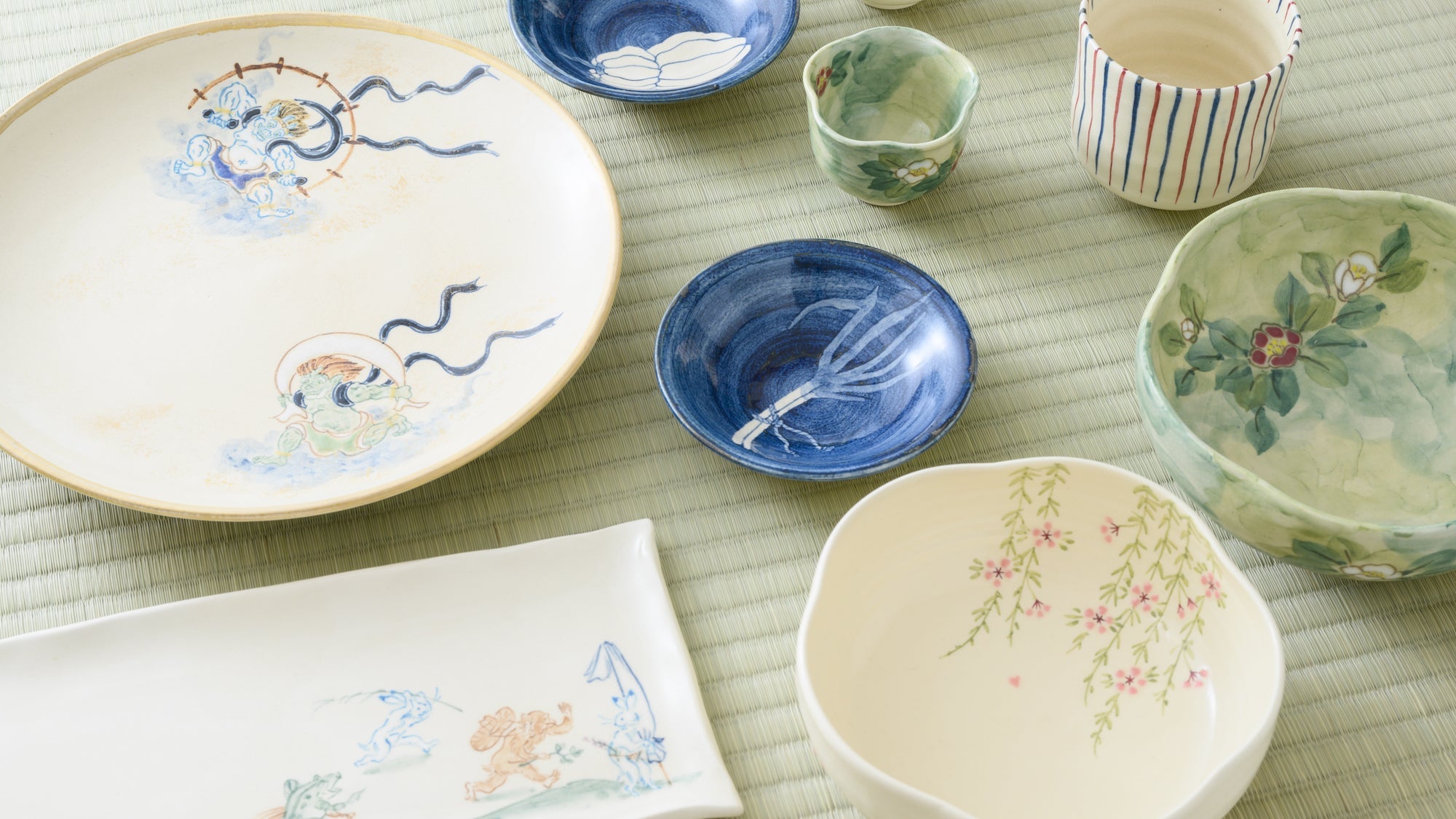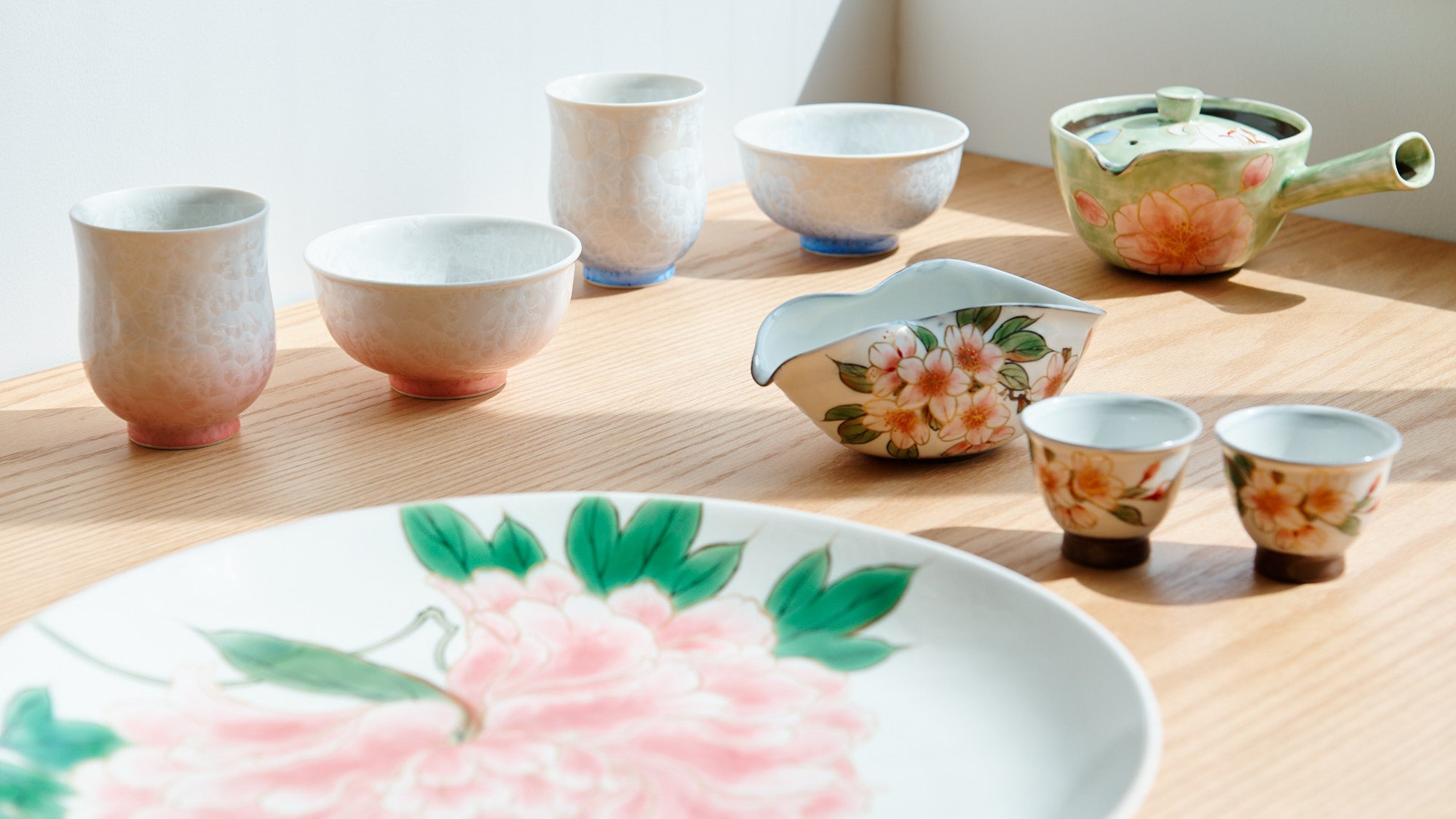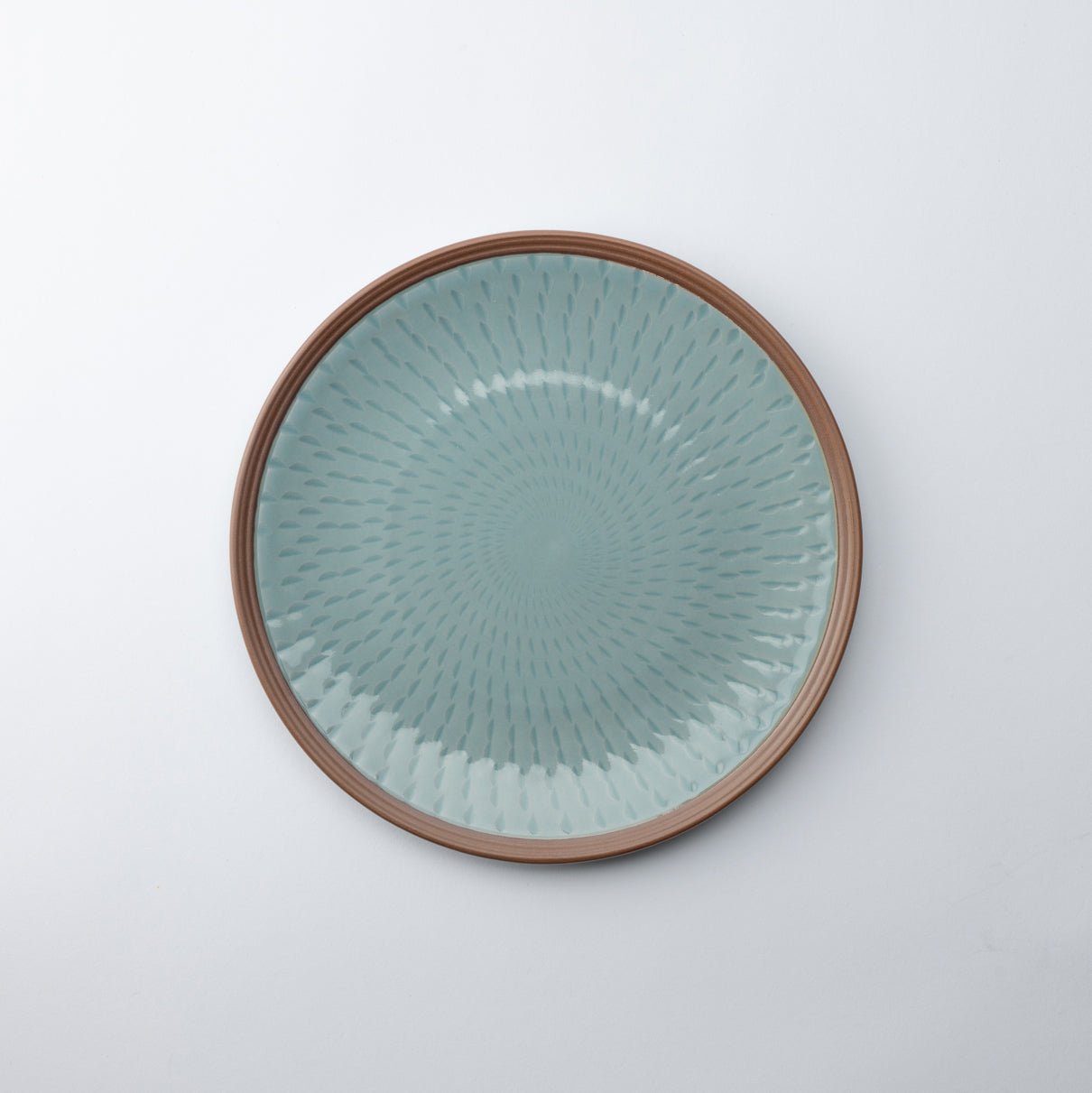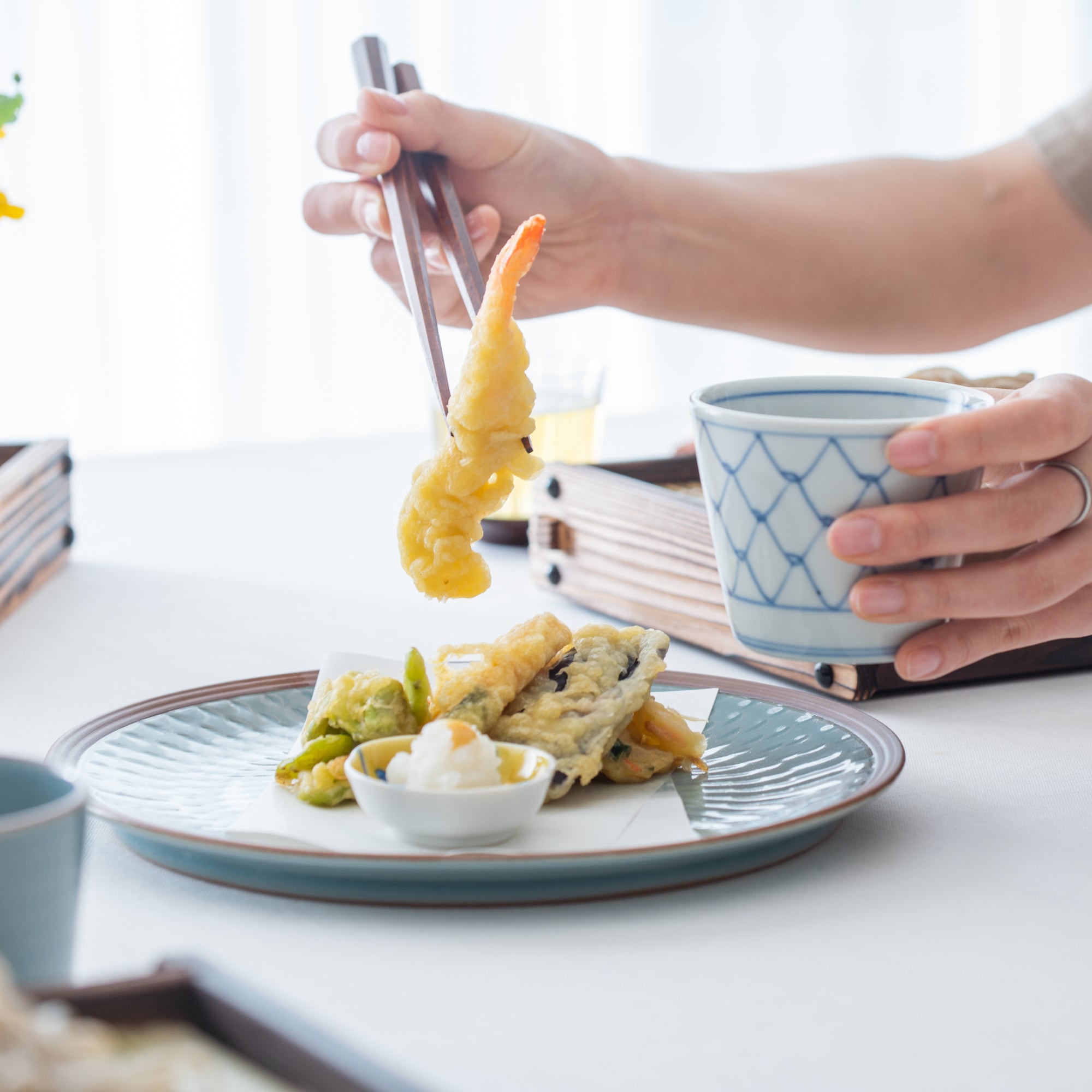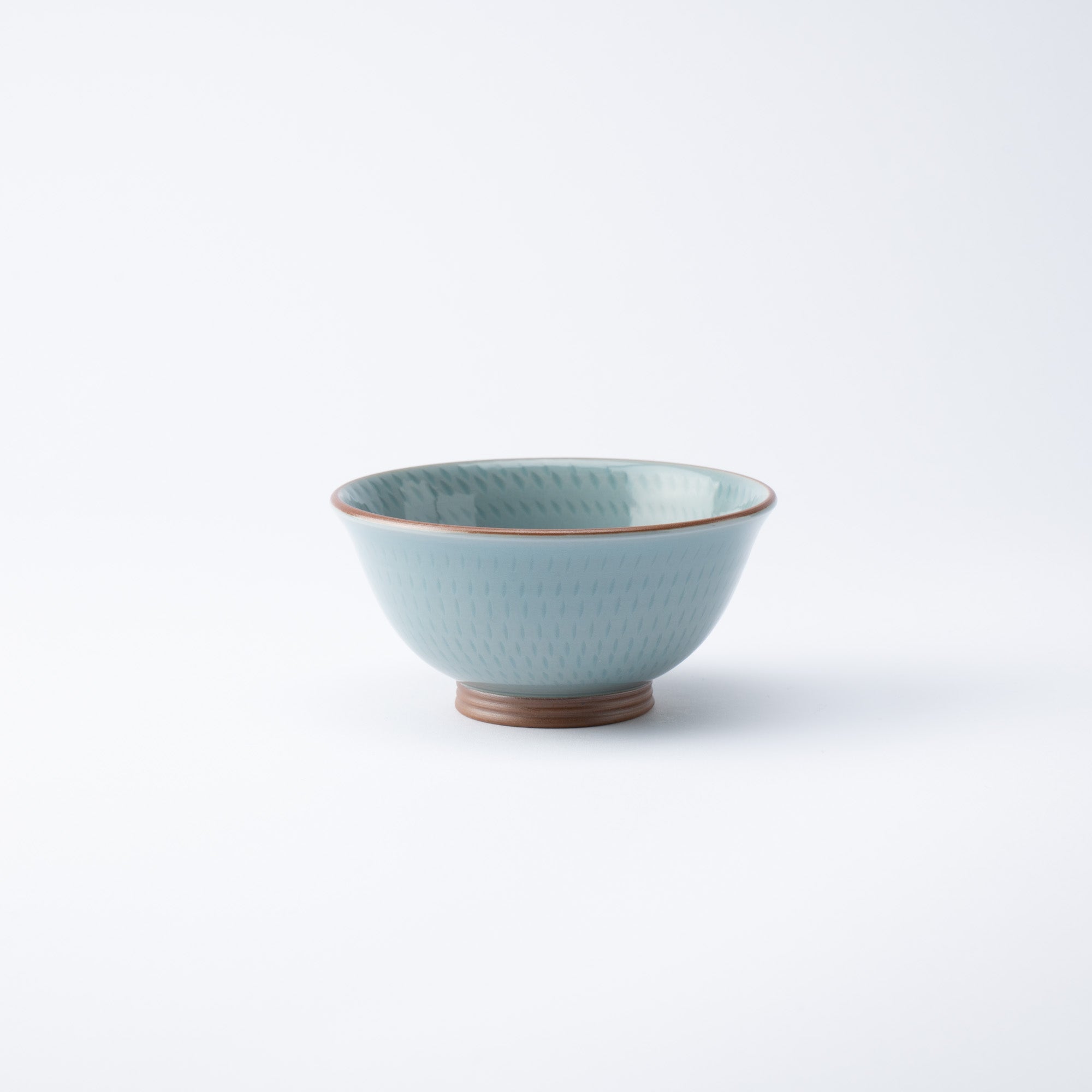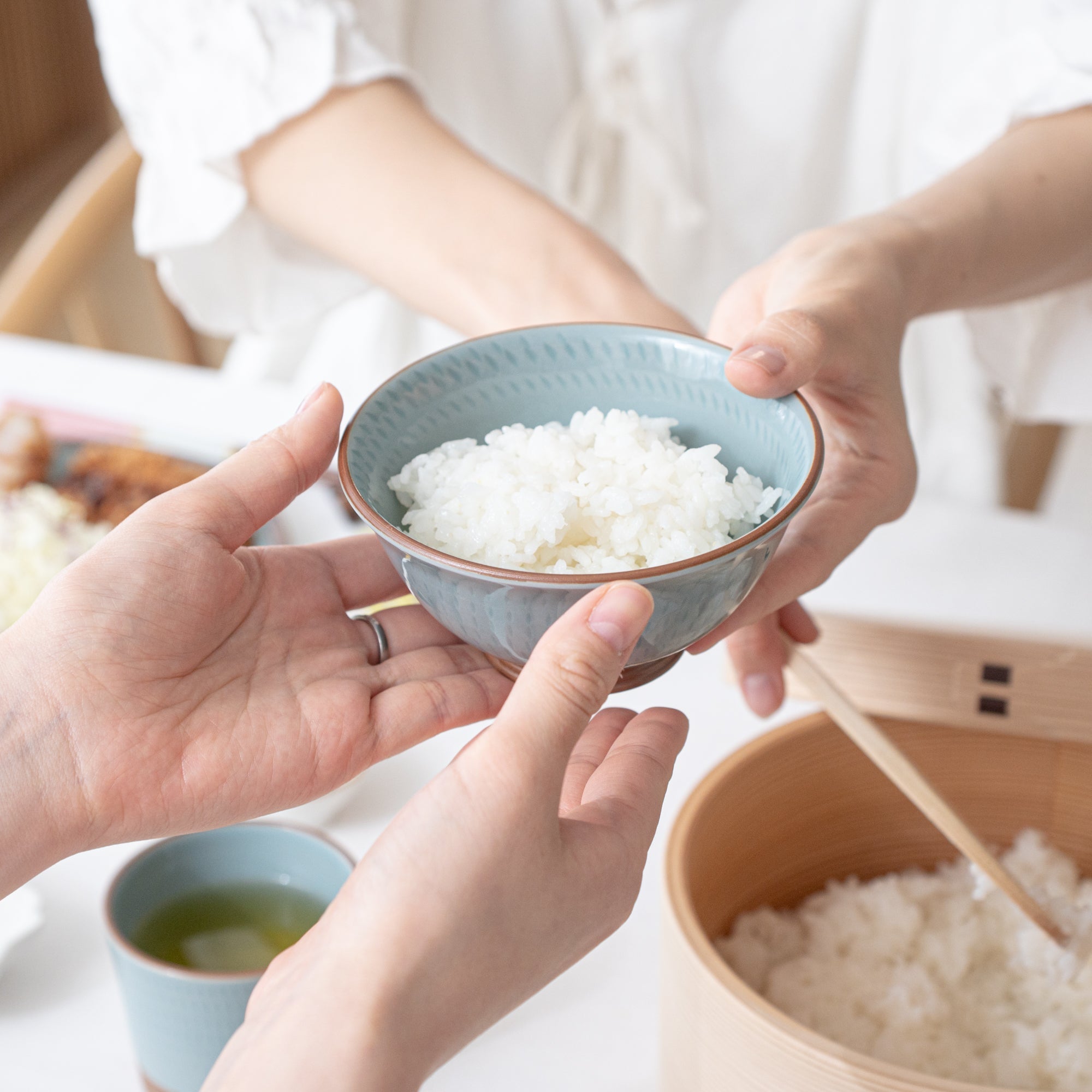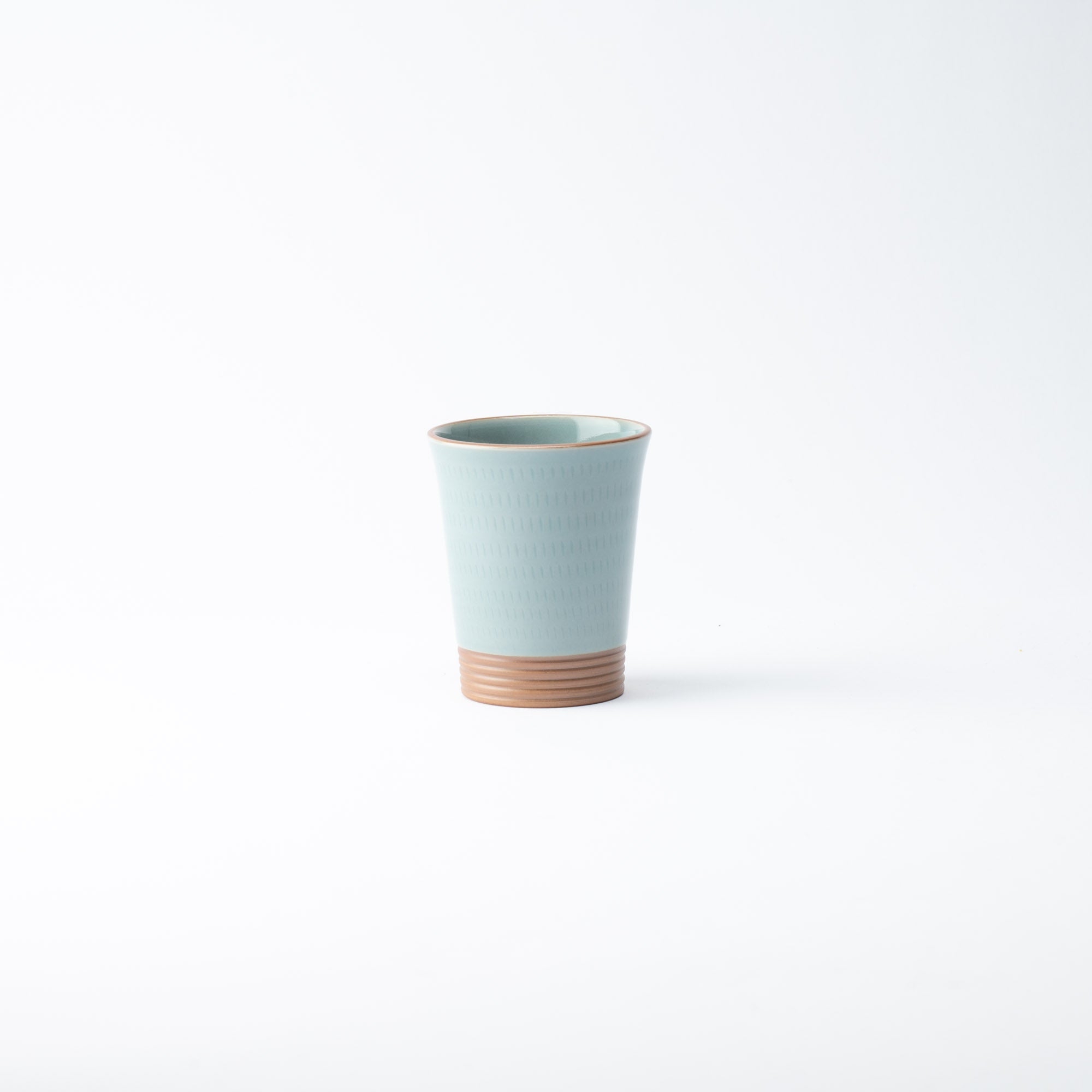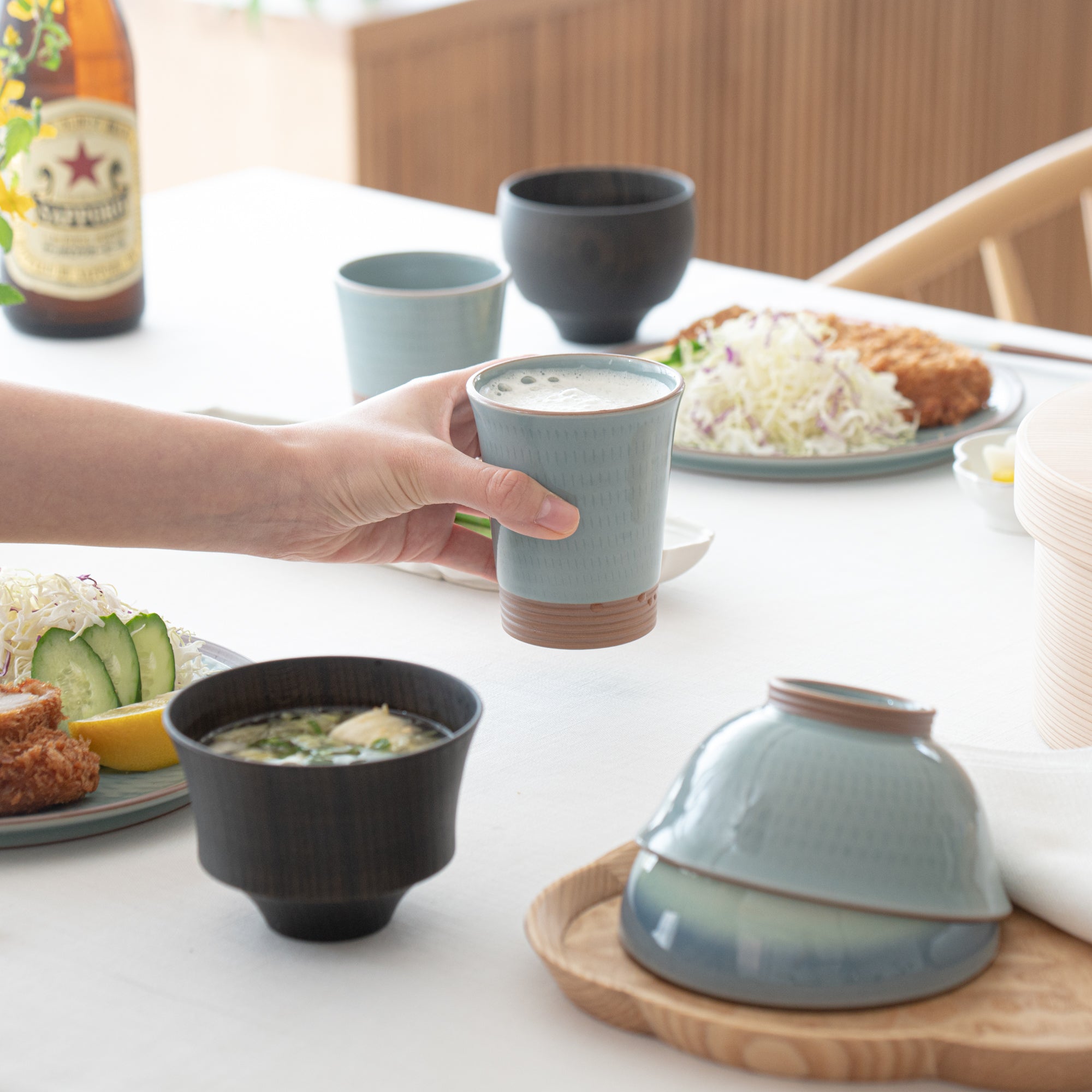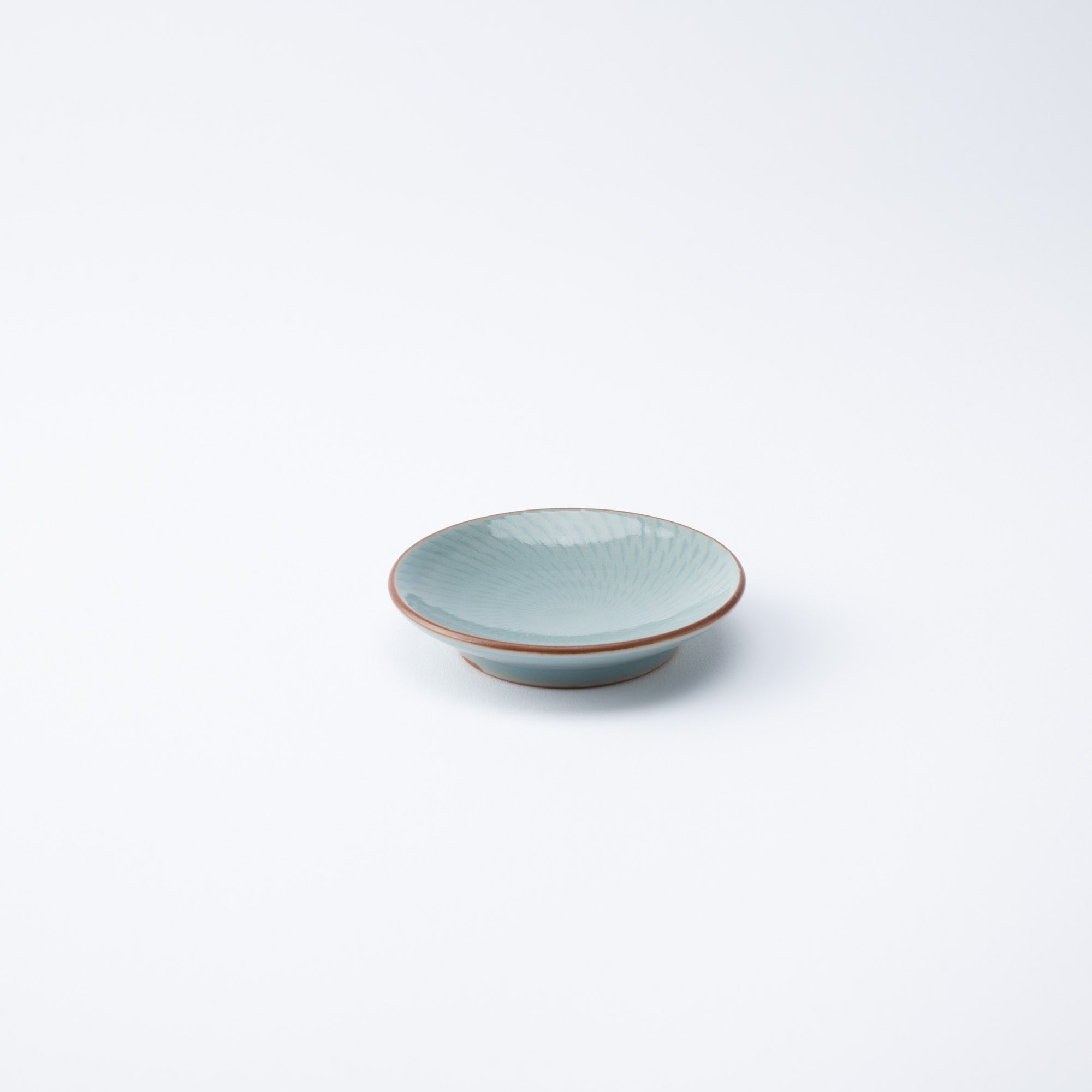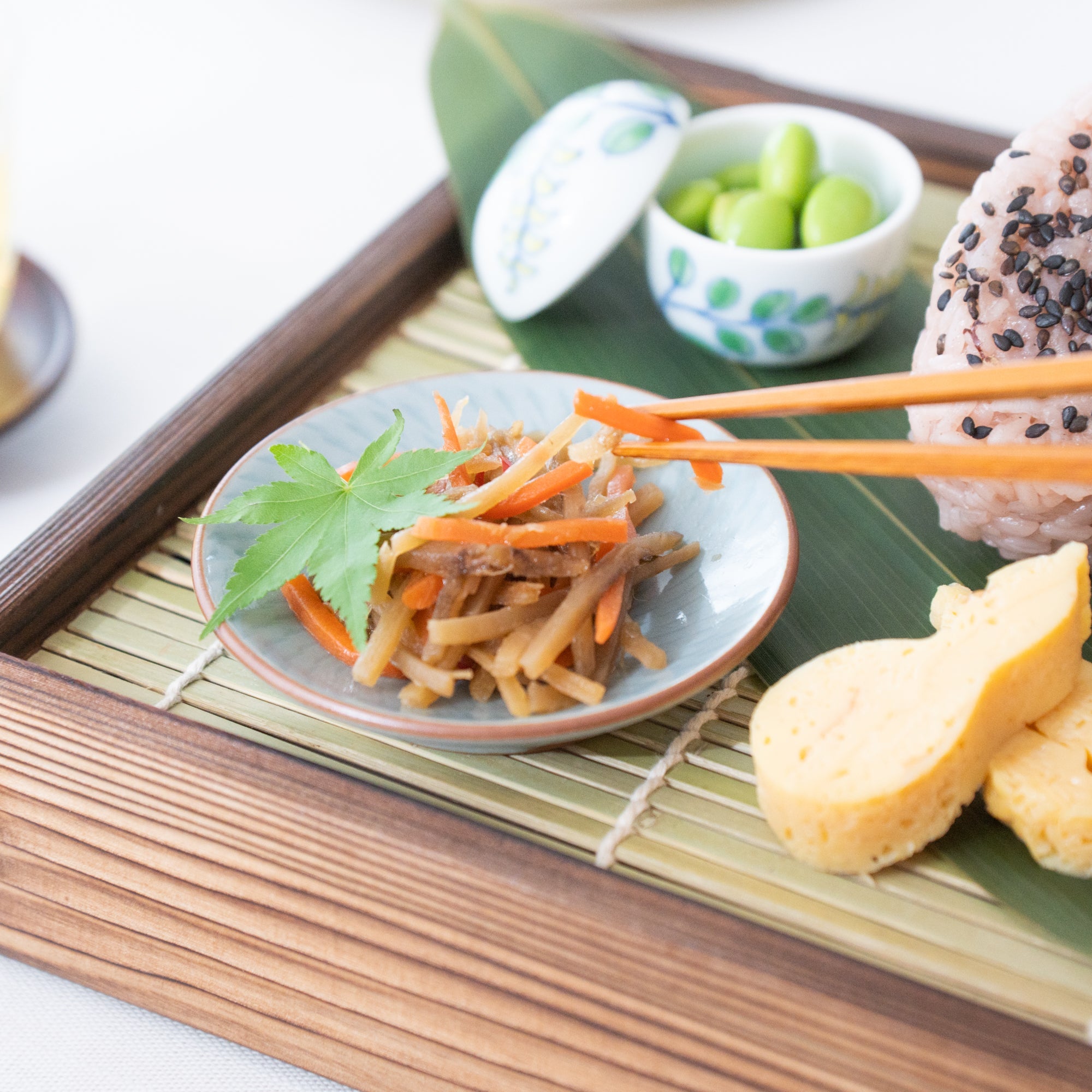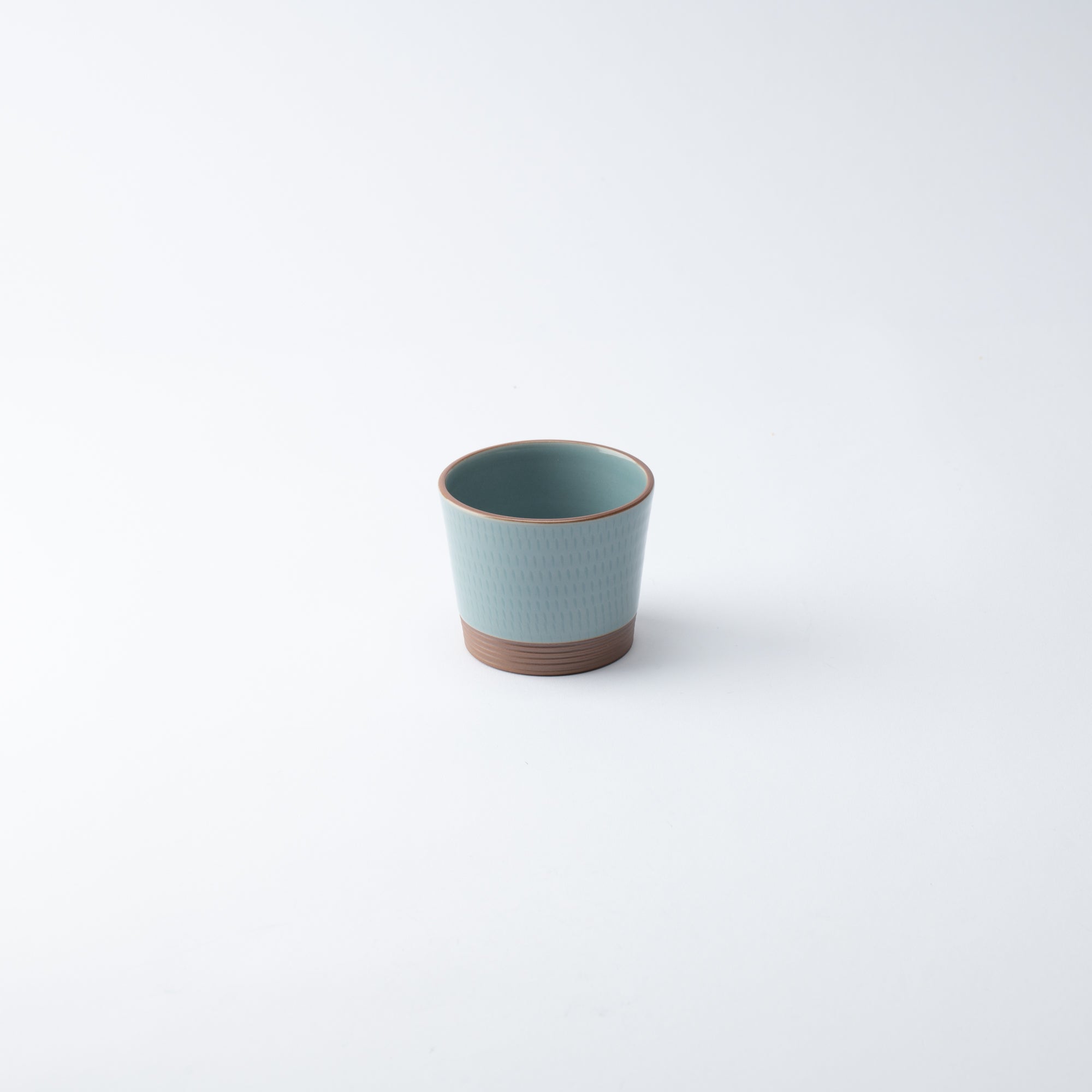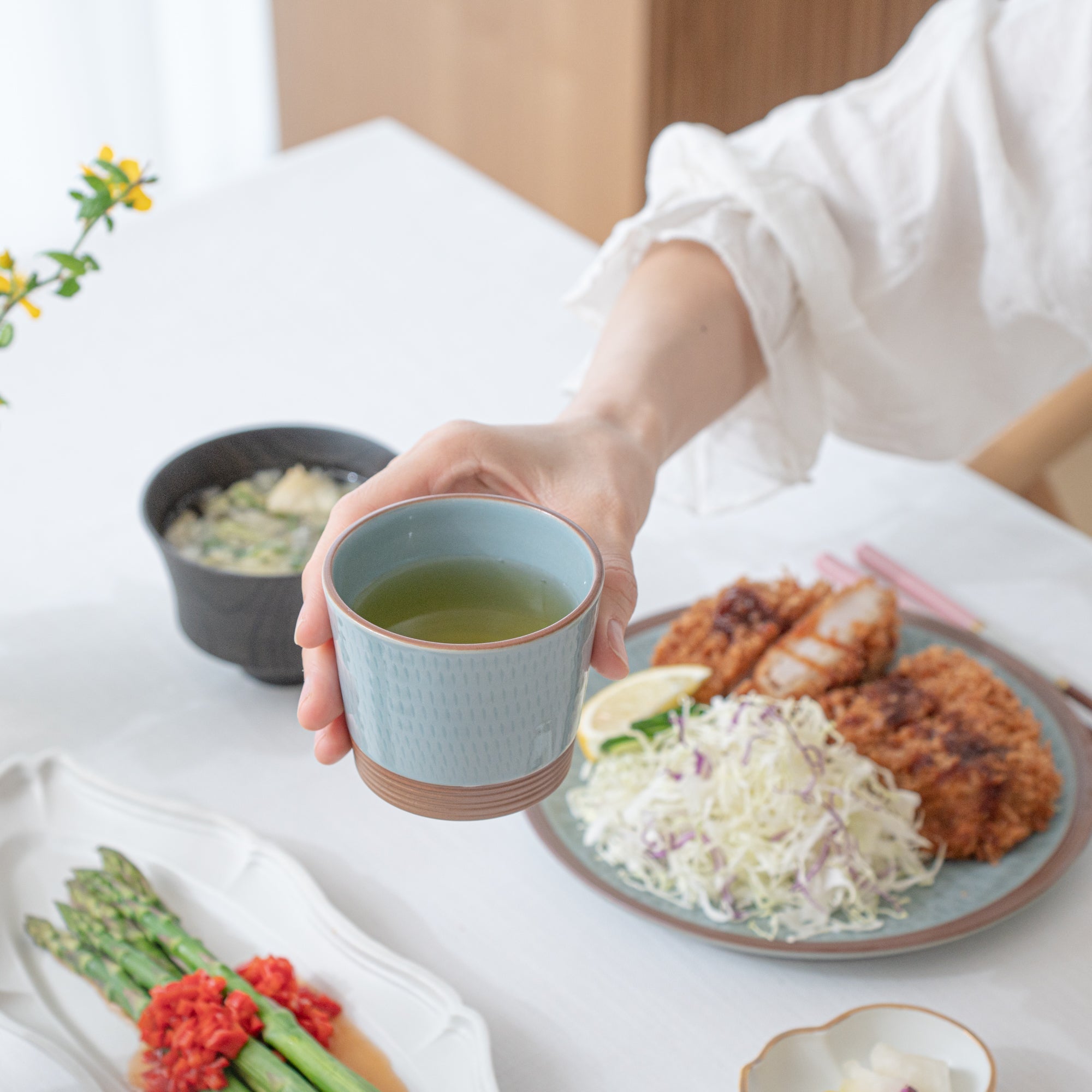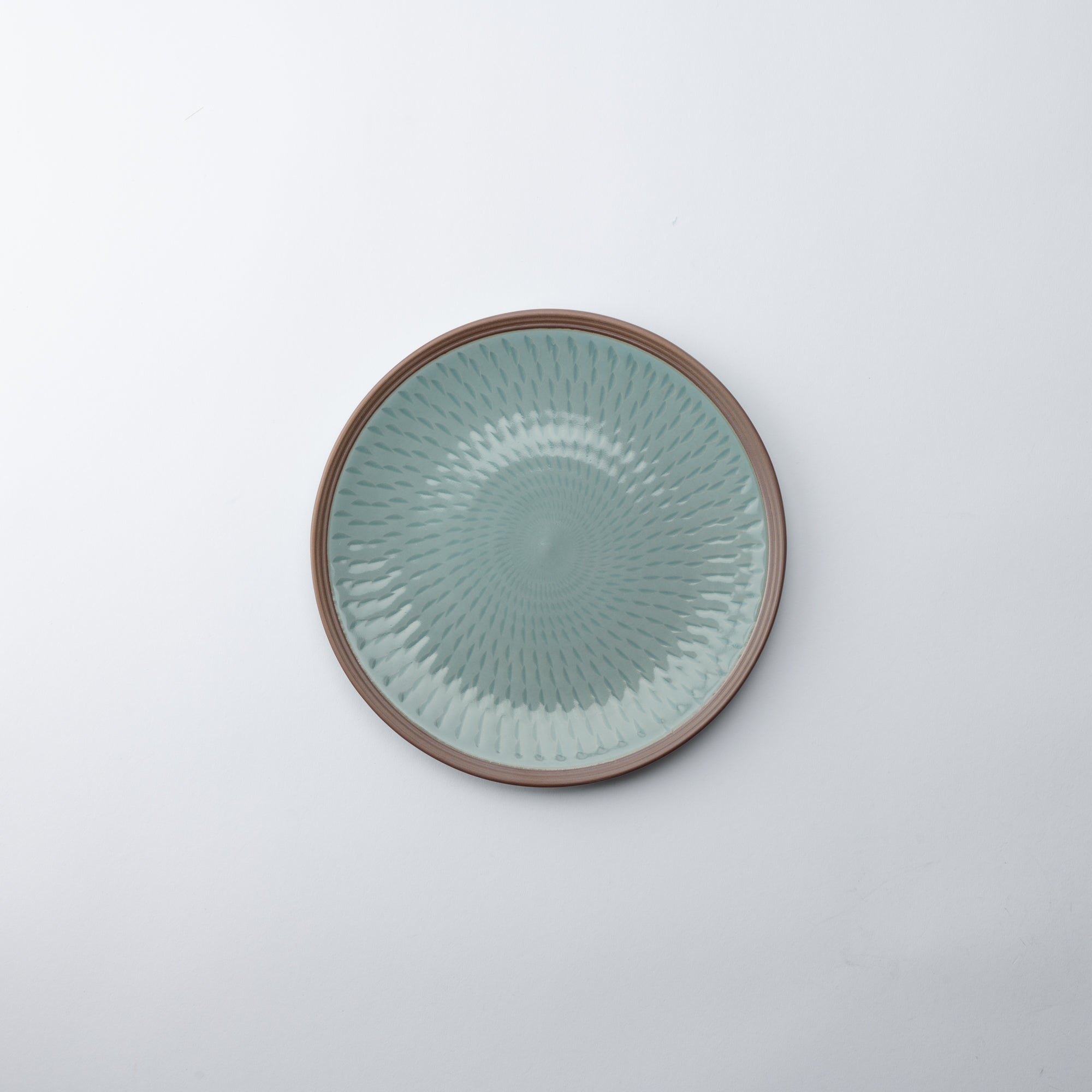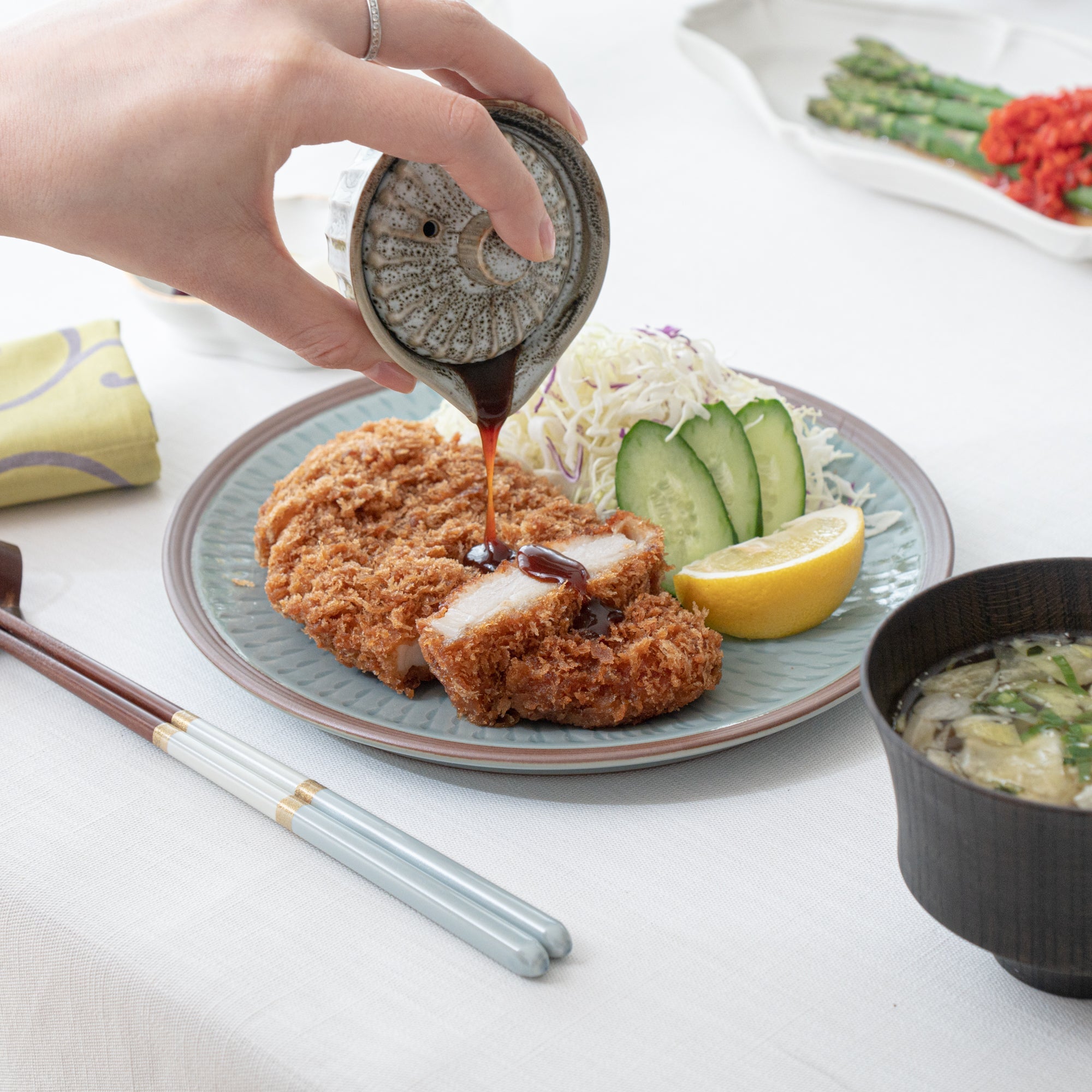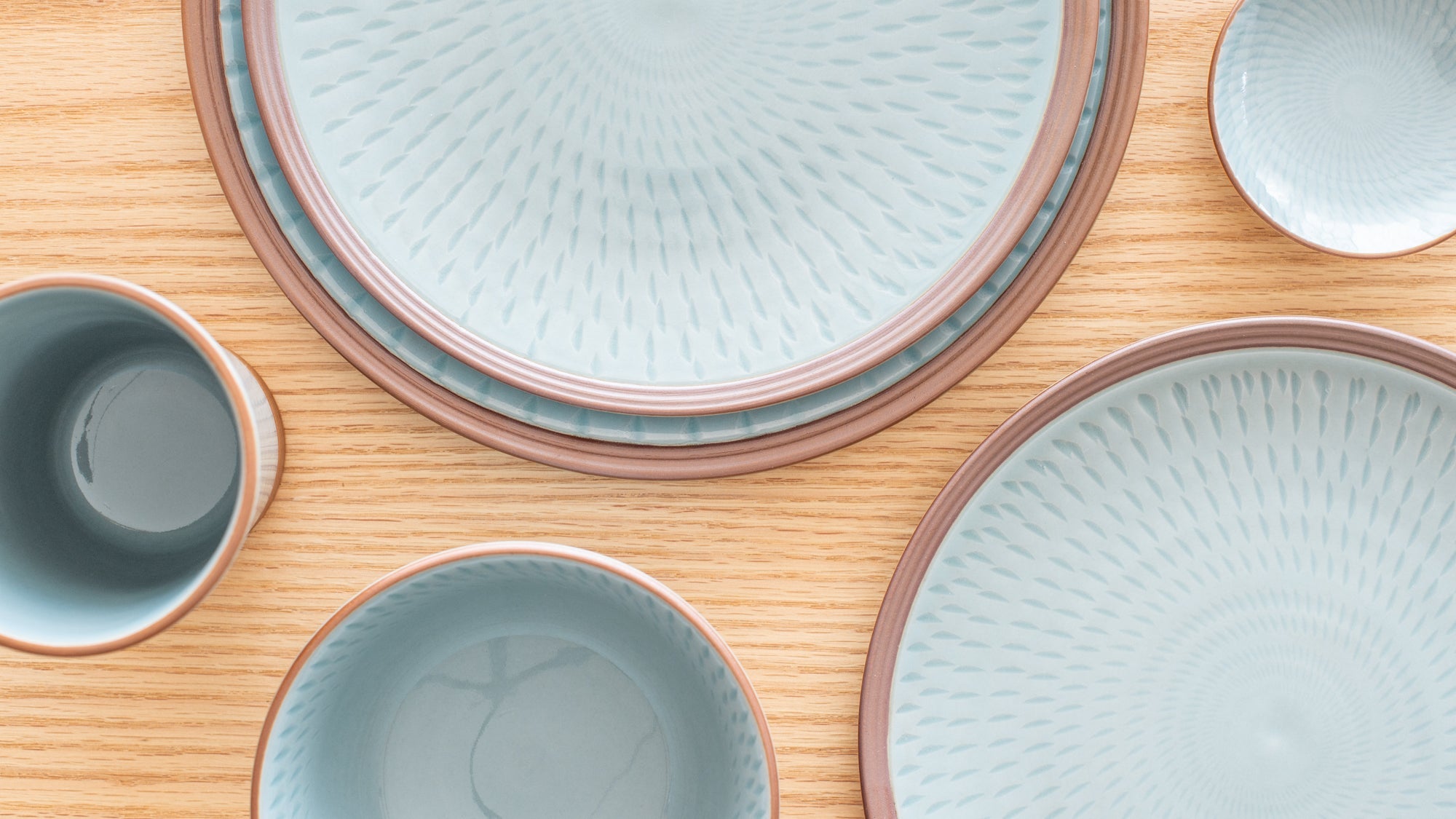
Soryu Kiln
Soryu Kiln is a Kyo ware kiln highly skilled in the art of celadon porcelain as well as the techniques of Fukuoka Prefecture's Koishiwara ware. Its works feature a unique design in which the blue shades celadon are emphasized by grooves made by carving out continuous geometric patterns using a technique called tobikanna, also known as chattering. Their style is a combination of the nobility of traditional celadon ware and the folk-art craft of tobikanna techniques.
The kiln is run by a couple, a Kyoto celadon potter Soryu Wanami and Madoka Wanami, who came from a long generation of Koishiwara ware from Fukuoka. Soryu came from a lineage of traditional Kyo ware celadon potters, himself being the 4th generation in succeeding the title of Soryu Wanami. His wife Madoka, comes from a lineage of Koishiwara ware, characteristic of the "Tobikanna" (Chattering Pottery) technique.
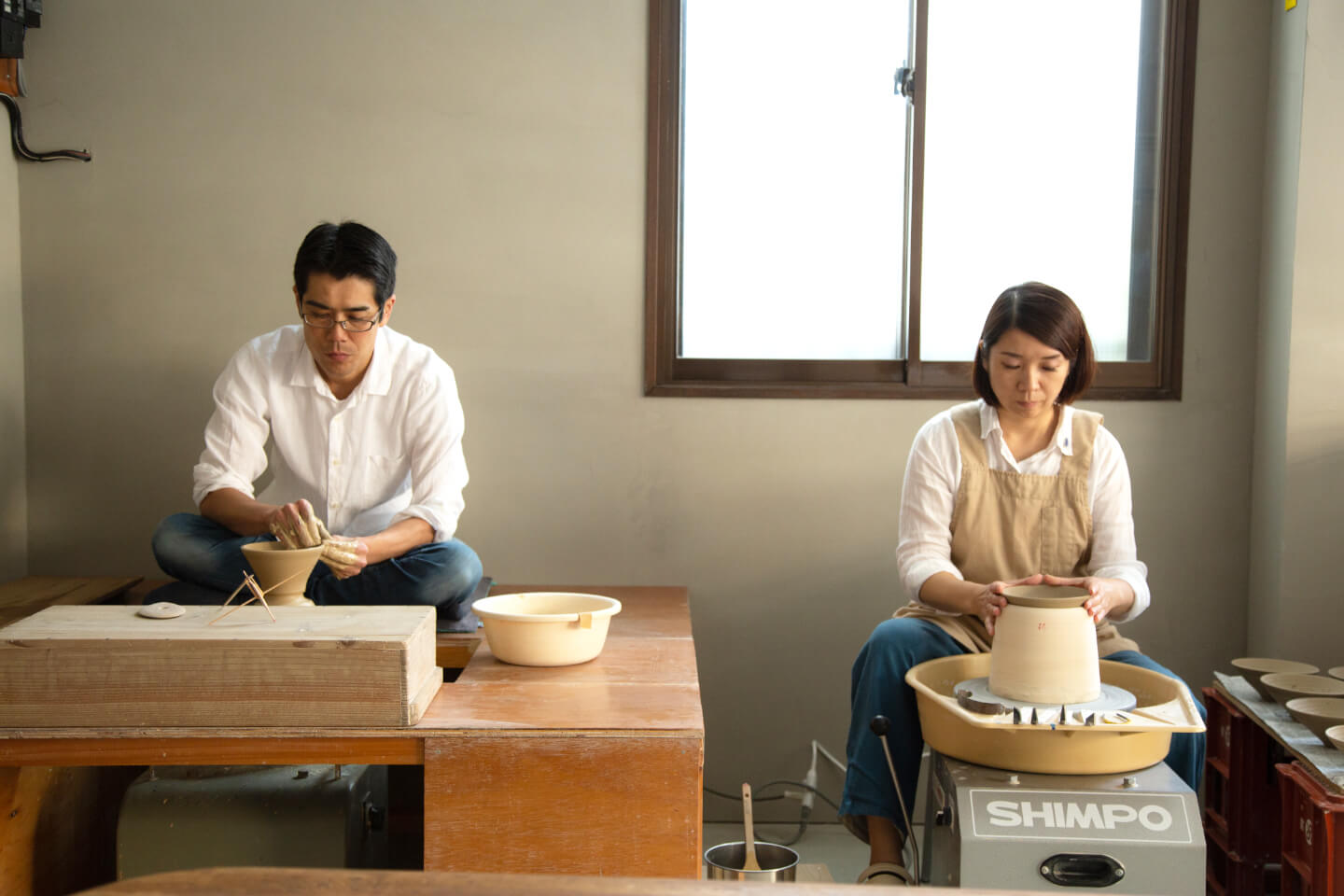
An Artist's Harmony of Kyo Ware and Folk Craft
Celadon tableware at Soryu Kiln is an example of the harmony between traditional heritage and folk craft. The brand was founded as a new brand of modern tableware, harmonizing the "Tobikanna" (Chattering Pottery) technique of Koishiwara ware folk craft from Madoka, Soryu's wife, and Celadon Kyo ware of Soryu Wanami. Kyo ware, by far from being an ancient art, is constantly pursuing its modern potentials, which Soryu Kiln is truly exemplary.
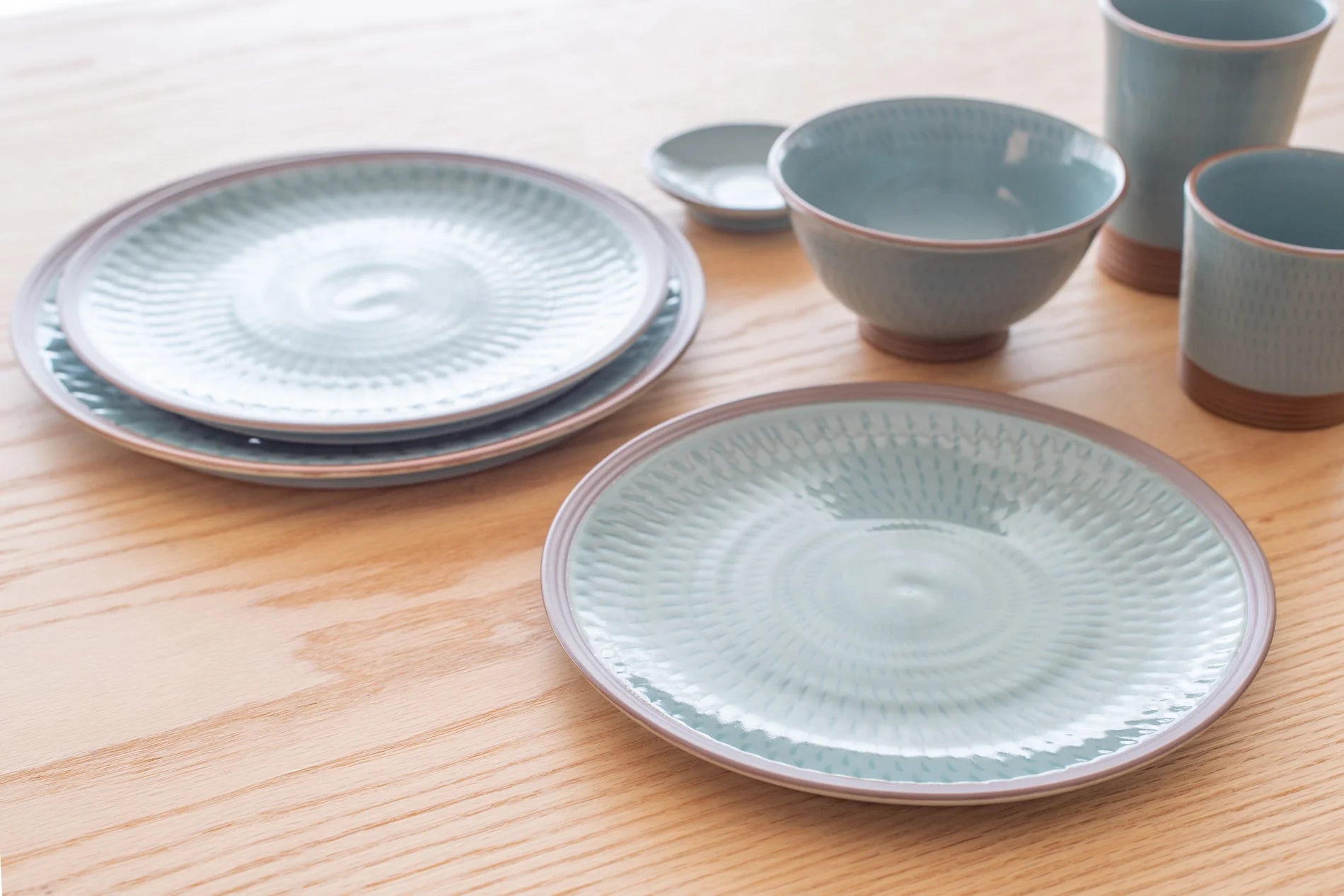
Accidental Beauty, Celadon, a True Heritage of East Asian Porcelain
The exquisite blend and glare of celadon porcelain we see today was caused by metal dust emerging into turquoise under the flame. The birth of celadon was very much accidental, 2400 years ago in China. Encapsulated by the transformation into this unique blend of a noble blue and emerald shine; from southern China to Thailand, Vietnam, Korea and Japan, Celadon art has become a truly communal heritage and beauty of East Asian porcelain.
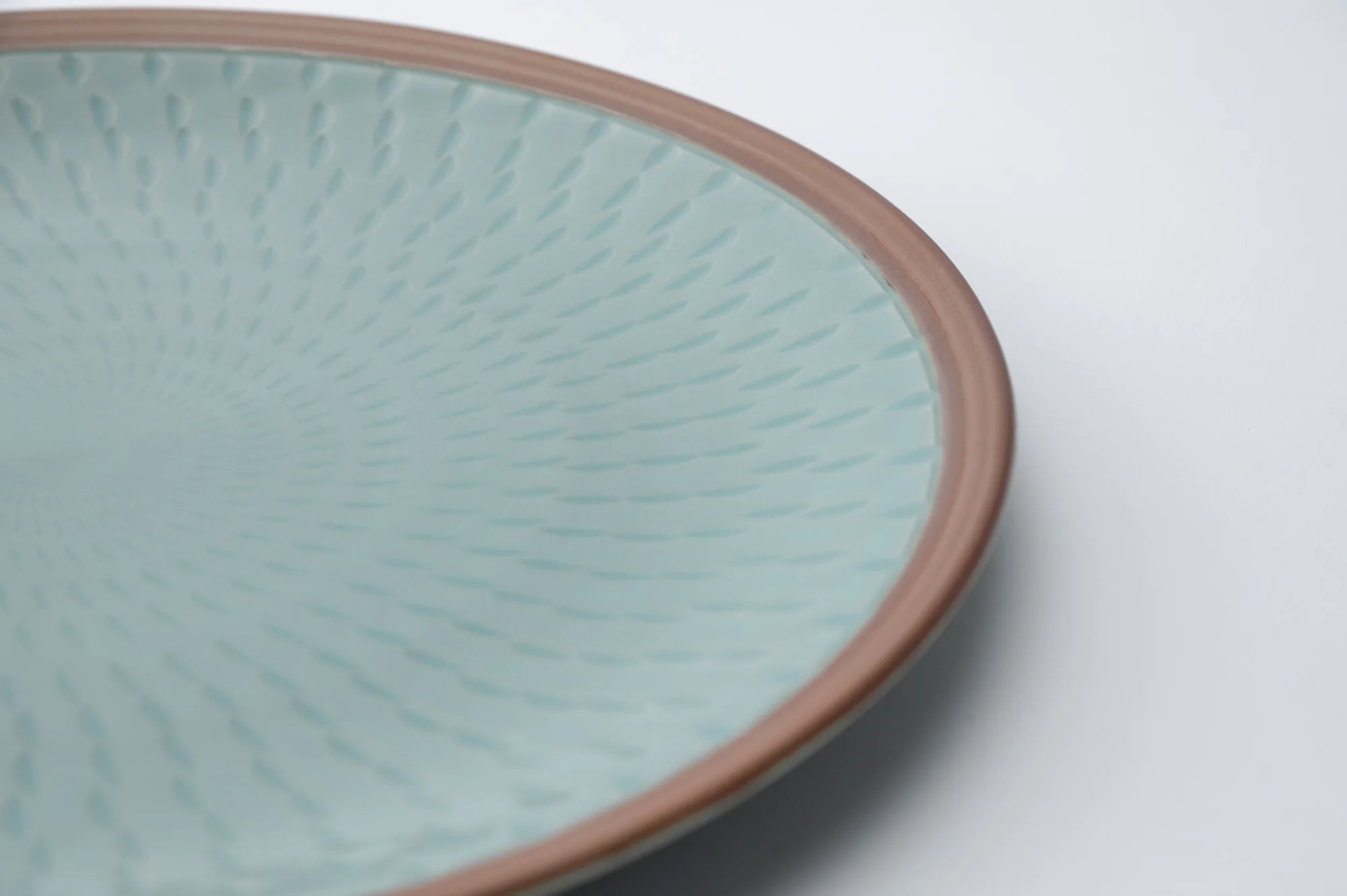
The Prestige of Celadon Porcelain, into the Scenes of Daily Cuisine
Coming from a century old kiln of Kyo ware specializing in celadon craft, the current 4th generation Soryu Wanami's desire was to incorporate this noble oriental heritage into the more familiar scenes of tableware. And as he had envisioned, founding the Soryu Kiln brand seven years ago, Soryu Kiln has achieved to make a whole variety of tableware, allowing us to enjoy and take part into the realm of the oriental prestigious arts, enriching the aesthetics of Japanese cuisine.
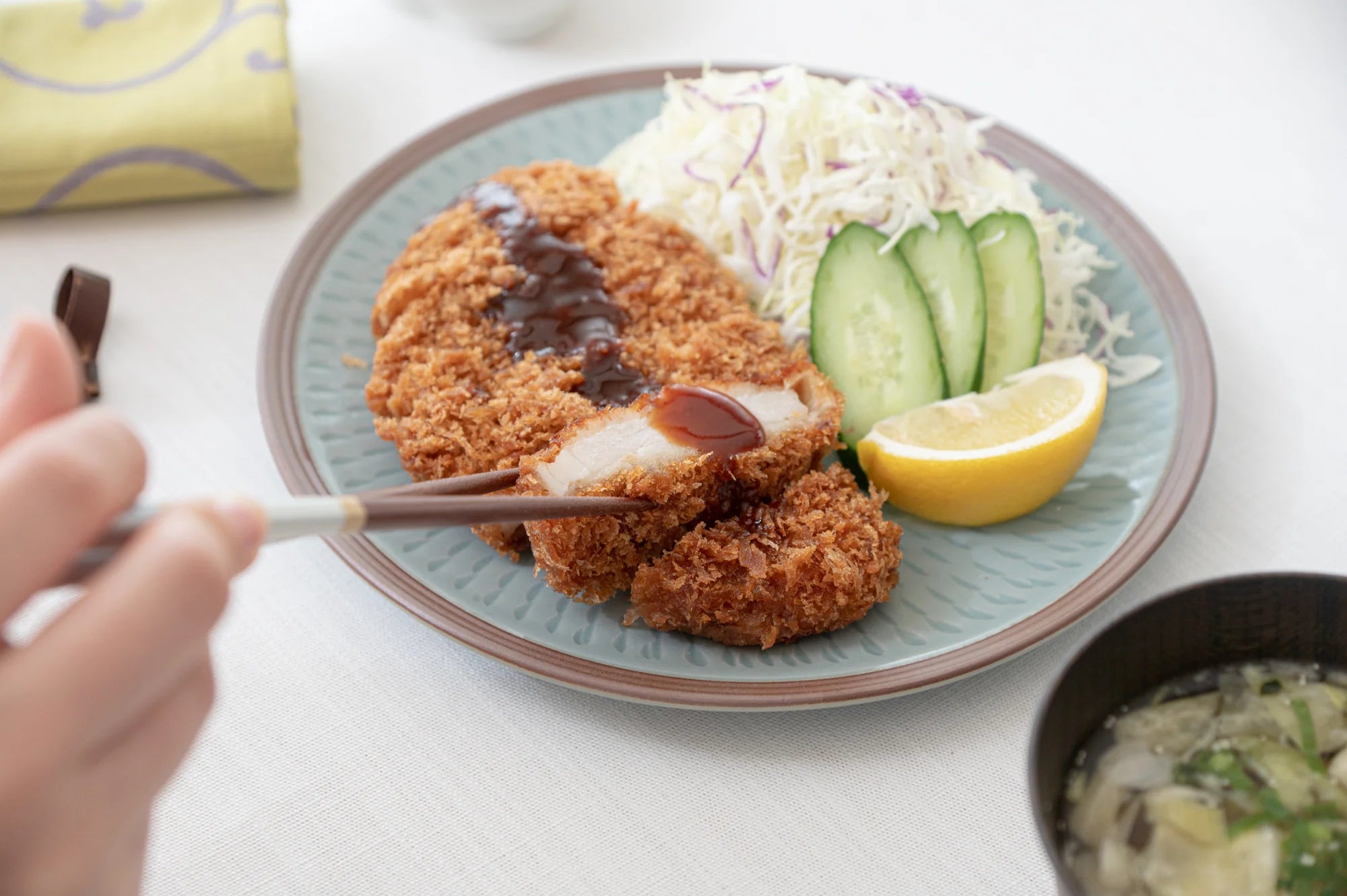
"Nerikomi Seiji," the kneading of celadon seeds into clay
At Soryu Kiln, the craftsman begins by adding celadon seeds, a separate pigmented mixture, into the porcelain clay. He must do this for each clay, and it is through this procedure that Soryu Kiln achieves a unique and sublime blend of turquoise-blue, a color inspired by the color of clear sky after rain. The clay is then carefully kneaded to mix the pigment, as well as to remove any air within. This method has been preserved for four generations, since the first Soryu Wanami studied under Kyo ware masters a century ago.
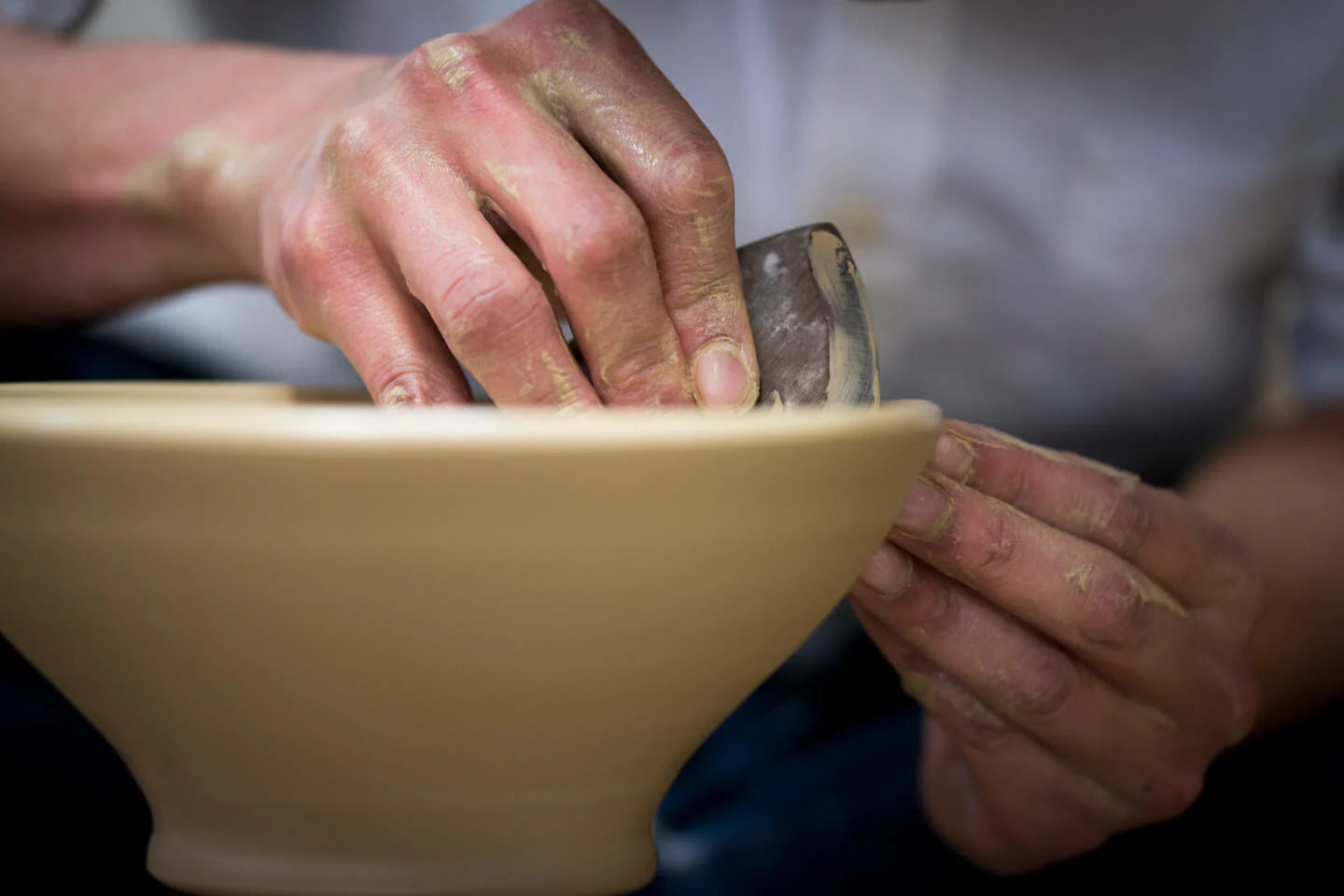
"Tobikanna," flying plane technique of Koishiwara ware
Soryu's wife Madoka, brought to Kyoto the traditions of Koishiwara ware. A craft which began in the 17th century characteristic of its use of "Kanna" (A metal plane, used for carving) , making simple but enjoyable patterns in folk craft. The "Tobikanna" (Flying plane) is a technique where the plane is gently laid on the spinning clay and the kanna "jumps" while creating bumps on the surface. In English this technique is often referred to as "Chattering pottery." The result is a geometric pattern of groovings, which when covered in glaze, create variations in shades of the turquoise celadon ware.
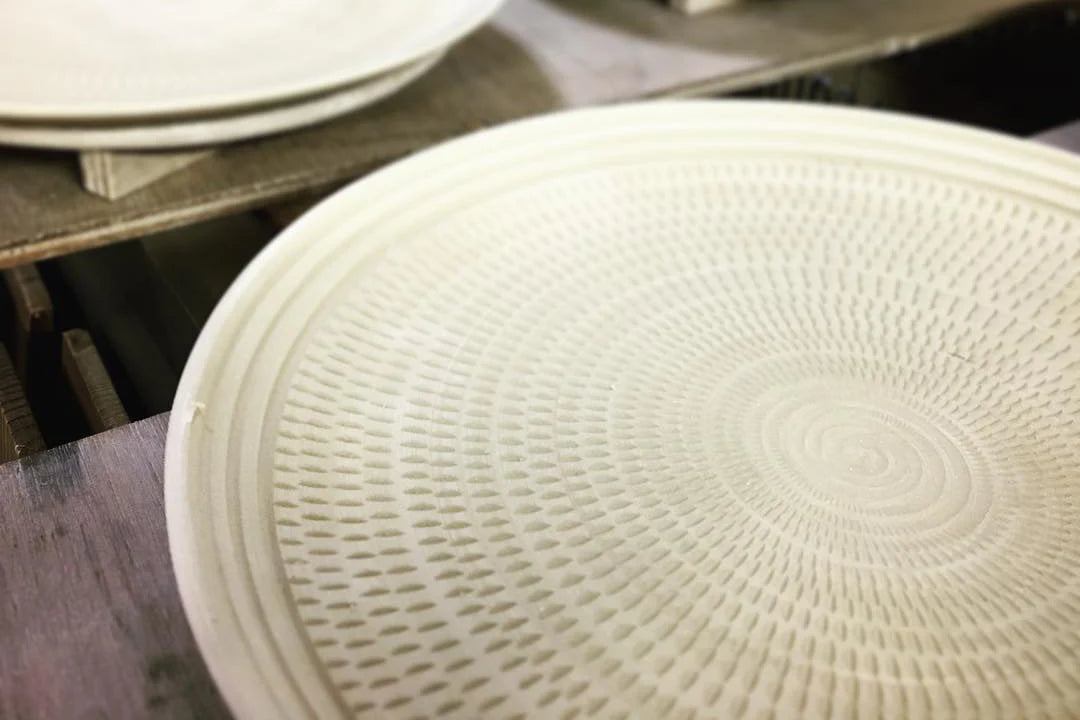
The signature series of Soryu Kiln is the “Celadon Tobikanna” series. The final achievement of Soryu Kiln’s desire to incorporate the prestige of celadon porcelain into the scenes of familiar tableware. The unique blend of pigments in the kneading process of the clay results in the profound and gentle warmth of turquoise glare on the charming plates and drinking ware. The beauty of the porcelain is given a touch of folk craft, with its skillful addition of geometric groovings, where the grooves are both pleasant for the eyes and for your hand to hover and grasp. The rim of the plates and cups reveal the red clay, giving a contrast between the luminous and smooth celadon and the rustic and stony texture of clay. A blend of precious high art of oriental porcelain and the more intimate feel of daily tableware and cuisine. The series comes with a whole variety of tableware from dishes of all sizes as well as drinking ware.
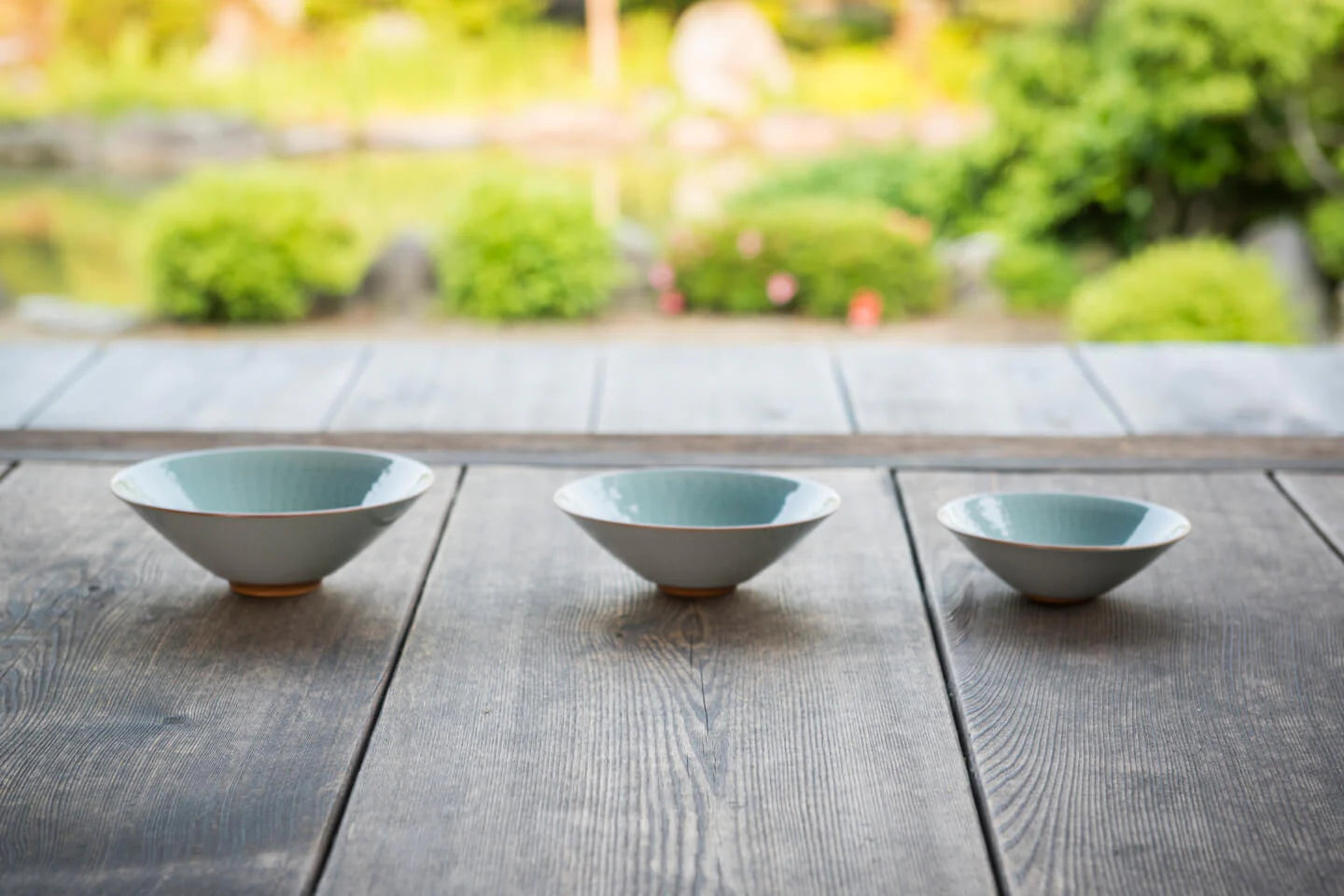
Origin & Other Makers
Filters


